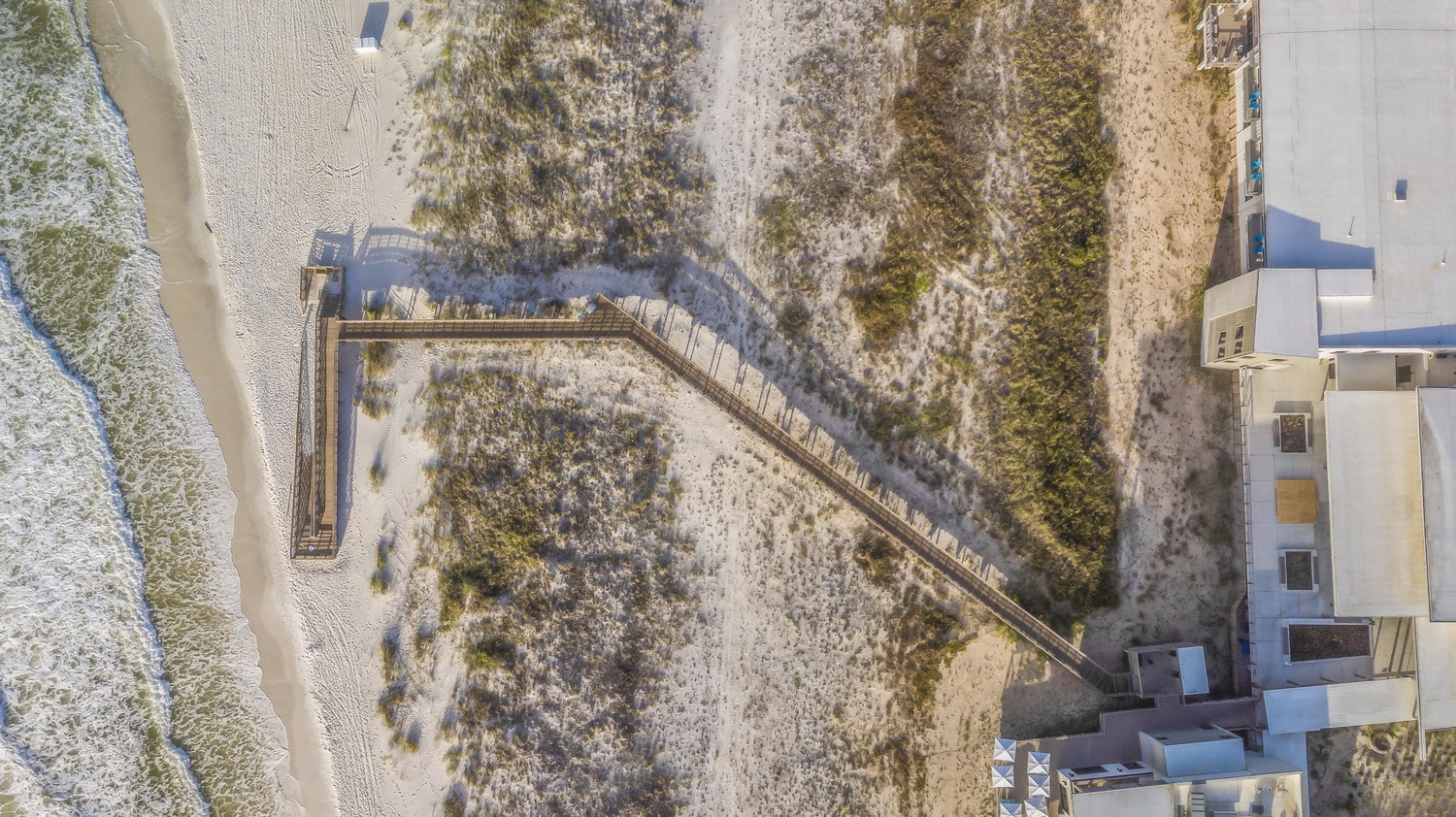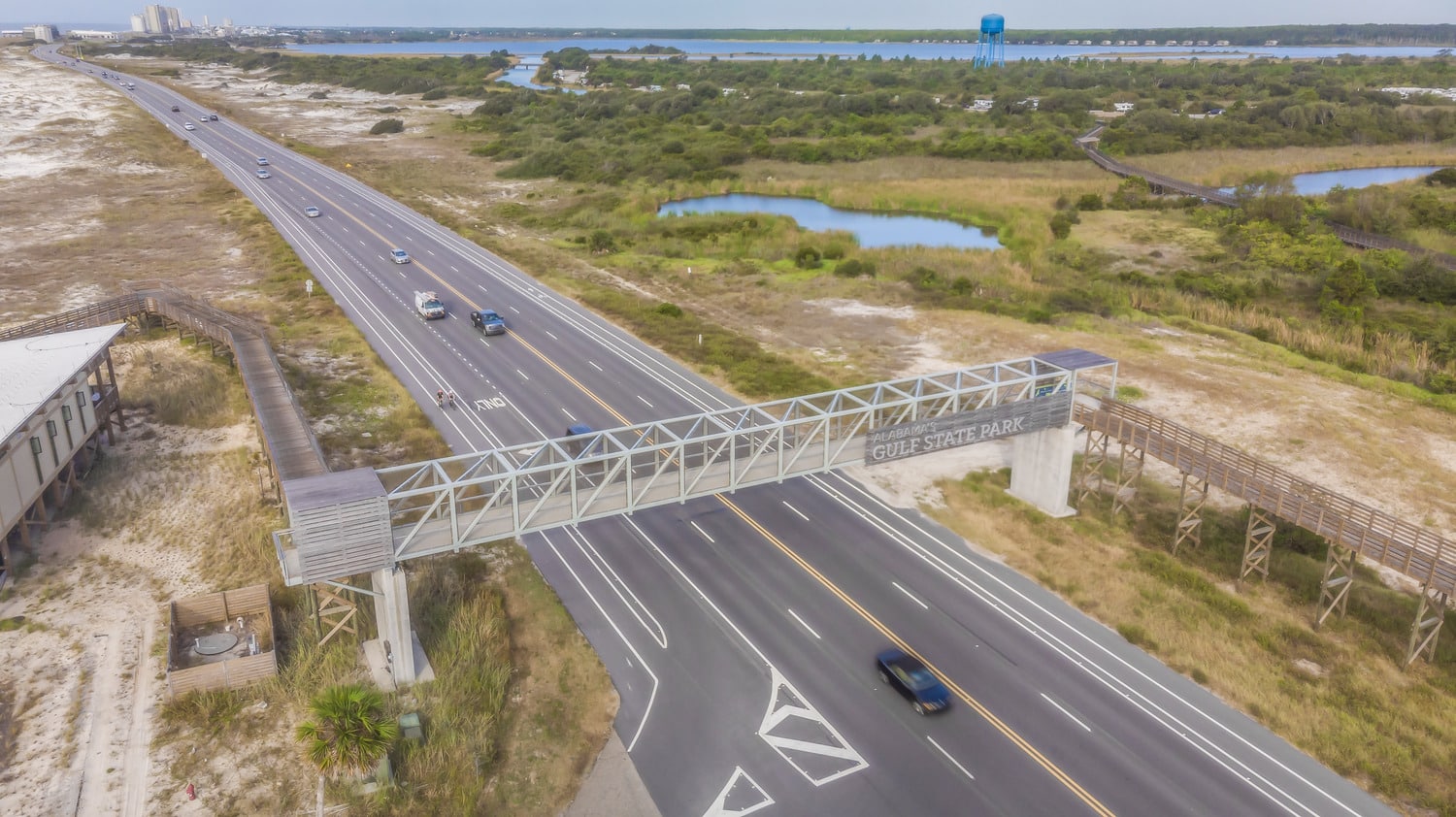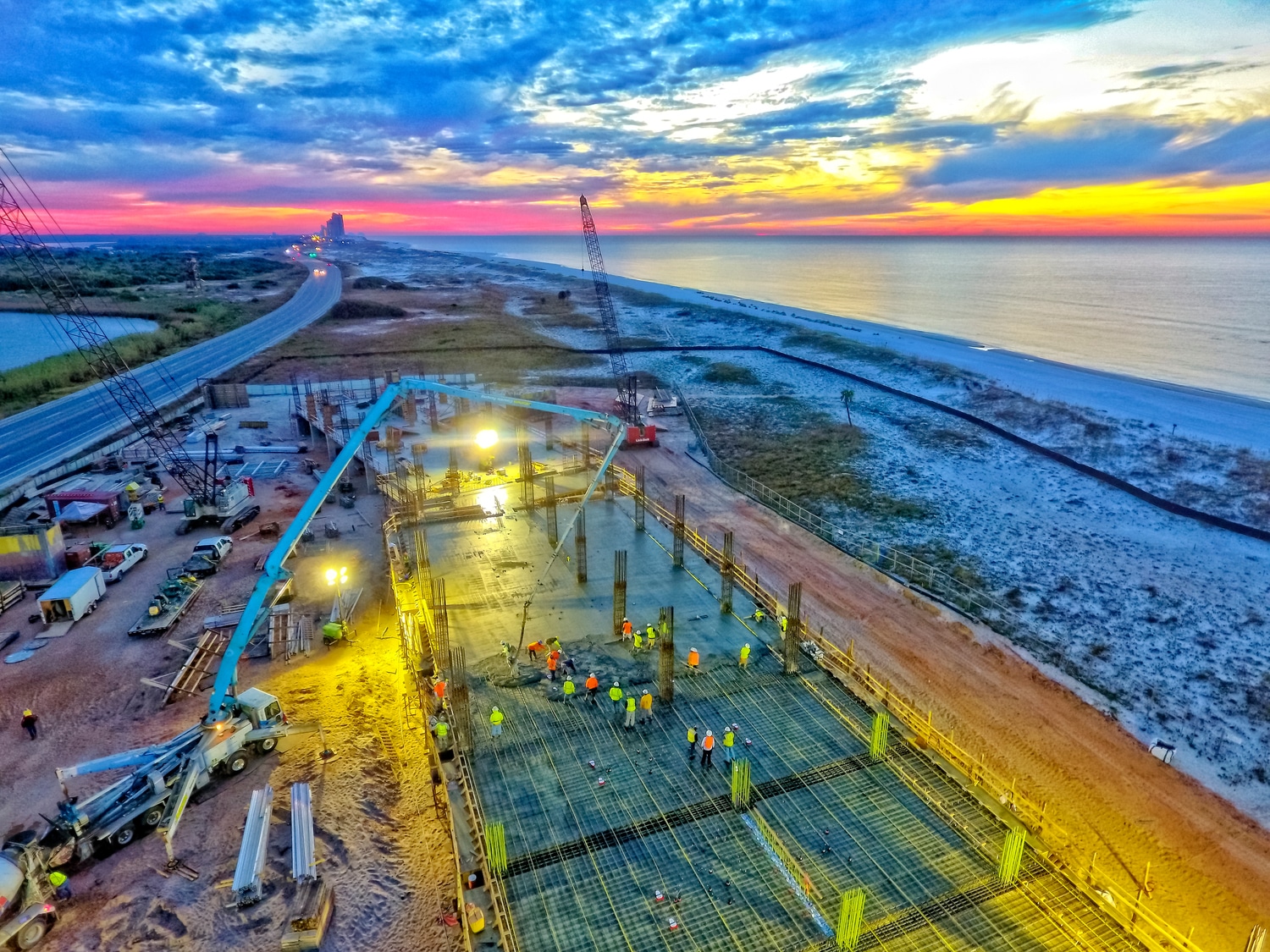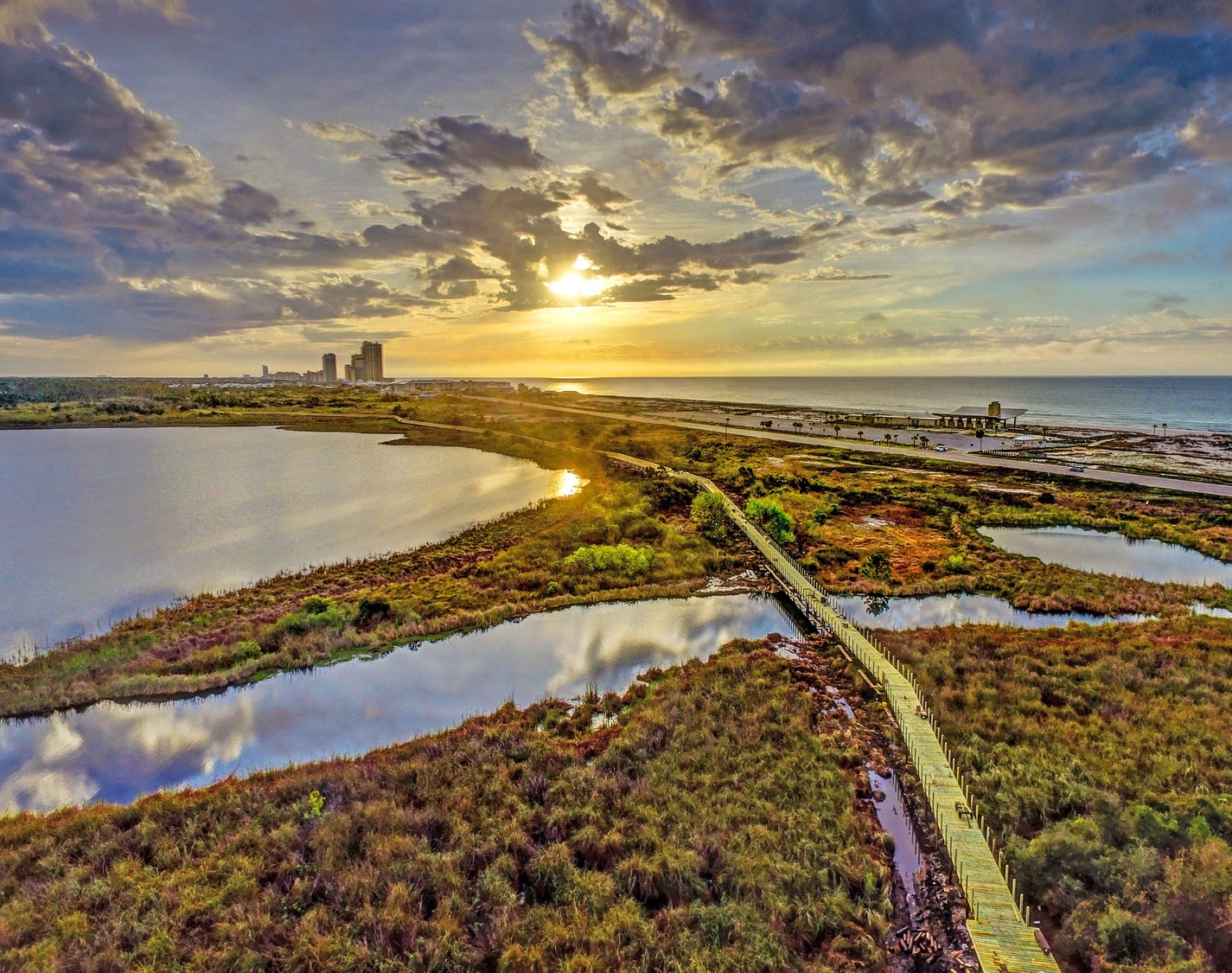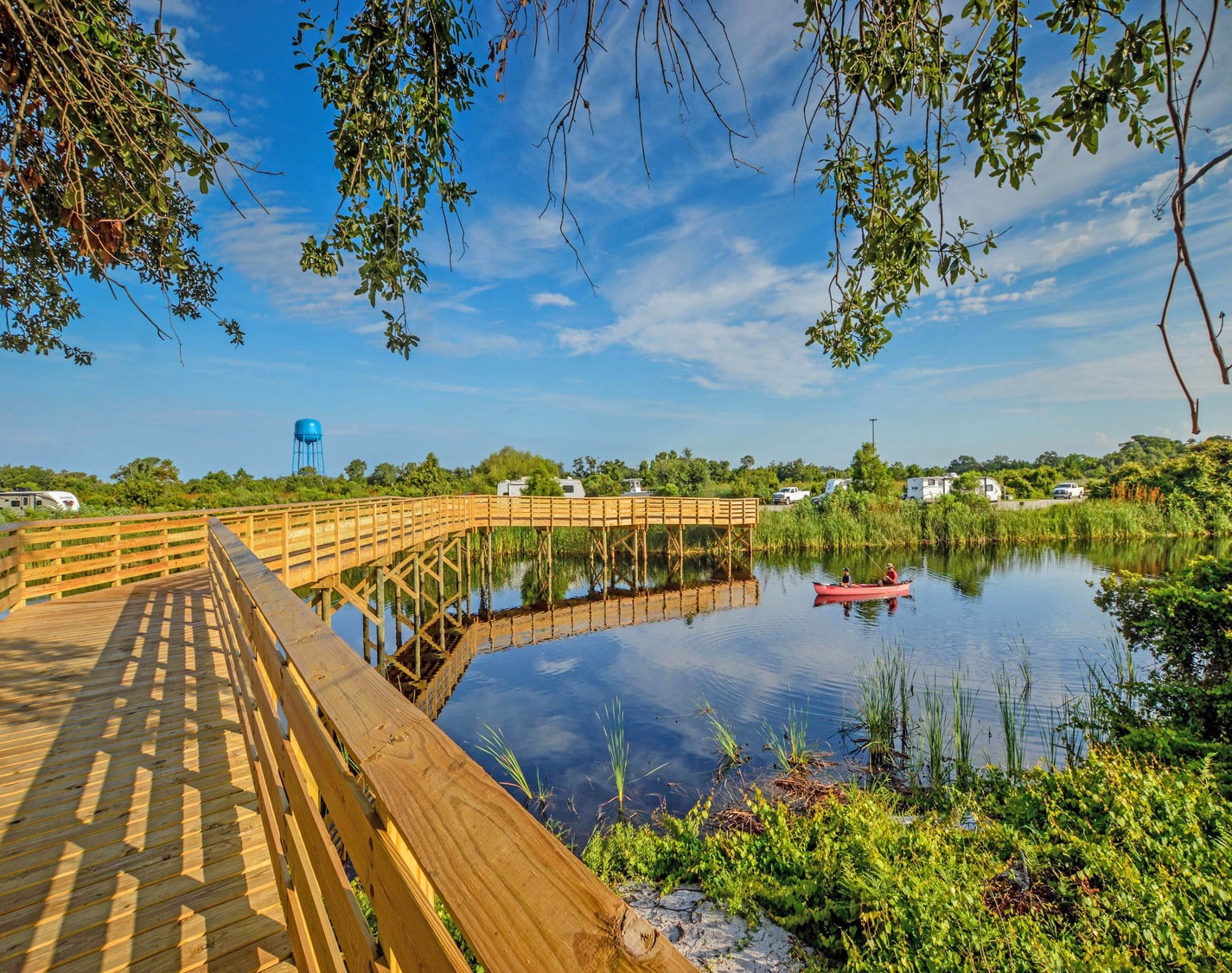Gulf State Park Enhancement Project
For over 50 years, Volkert has been a design and environmental services partner of the Alabama Department of Conservation and Natural Resources (ADCNR) at Gulf State Park. Over the years, Volkert has continued to provide services to the park that enhance its beauty and utility while minimizing impact on its wetland environment.
As one of the state’s most cherished natural assets, Gulf State Park preserves 6,150 acres of pristine coastal scenery on the historic Alabama Gulf Coast. Twenty-eight miles of trails connect nine distinct ecosystems including three freshwater lakes, over two miles of pristine beaches, and maritime forests. The park’s rich biodiversity provides critical habitat for several threatened and endangered species and is an important stop on the Mississippi Flyway, a migration route for roughly 325 bird species.
With funding through Natural Resource Damage Assessment (NRDA) as a result of the Deepwater Horizon oil spill, ADCNR launched a $135 million enhancement program for Gulf State Park where Volkert provided construction management and environmental permitting services. The goal of this program was to restore the health and beauty of the park and the surrounding region through low-impact development of amenities that enhance the ecosystem, attract and educate visitors, and repair and restore economic and environmental damage from the oil spill.
Because this project is located on the beach and inside the protected lands of the state park in proximity to ongoing park operations, it required environmentally sensitive approaches and strategies to ensure the integrity and safety of the natural environment and ecologies including both protected and non-protected plant and animal species, archaeologically sensitive cultural resources, and the general public. Volkert worked with the U.S. Fish. and Wildlife Service to develop a revised Habitat Conservation Plan, Dune Restoration and Management Plan, and an Environmental Impact and Natural Hazards Study..
The infrastructure improvements on the beach were within the designated critical habitat for the endangered Alabama Beach Mouse. Therefore, Volkert’s environmental team worked to relocate the mice throughout the project depending on the location of construction. These efforts supported the Endangered Species Act and minimize the incidental take of mice during construction. Volkert’s environmental team also restored 50 acres of coastal dune habitat.
The Lodge at Gulf State Park, A Hilton Hotel, was one of five primary component projects that made up the enhancement program. The program also included restoration of the dune system, improvements to the extensive pedestrian trail system, construction of a beachfront interpretive center, and construction of a learning campus. The 350-room hotel and conference center features a spacious beach-front lobby, two restaurants, and a conference center with 40,000 square feet of meeting space overlooking the Gulf of Mexico and the park. Volkert served as the construction manager for all planned development and facilities.
The Interpretive Center was designed and constructed to have a “net positive” effect on the surrounding environment and natural ecosystems, and to educate how highly sustainable facilities can be built and operated. The 5,500 square foot facility features a unique rainwater collection and treatment system that produces 105% of the potable water required for the building’s operation. It also has a solar photovoltaic system that generates 105% of the energy required to operate the building. It features a multipurpose meeting room and an “educational porch” with interpretive displays designed to educate guests not only about Gulf State Park, but also about the design and operation of this unique and highly sustainable building.
The Interpretive Center is one of only a handful of buildings in the world, and the first in the state of Alabama, to achieve full certification under the Living Building Challenge (LBC), arguably the most strenuous sustainability certification in the world. In addition, it is also certified under Leadership in Energy and Environmental Design (LEED Platinum) and was the first building in the world to achieve certification under the new FORTIFIED Commercial certification system which promotes resiliency and enhanced structural protection of commercial and non-residential facilities from severe storms and wind.
The Learning Campus was designed and built as a model of resiliency and environmentally friendly coastal development. The campus features nearly 22,000 square feet of facilities including multiple classrooms and labs, an auditorium, outdoor gathering and event spaces, two 32-bed bunk houses for overnight guests, and a restaurant that is open to the public. It is a LEED Silver level and FORTIFIED Commercial certificatied system project.
There were 28 miles of trails that were restored or constructed with exhibits and interpretive signs that educate visitors about the park’s diverse ecology and cultural history. The trails connect all the amenities of Gulf State Park and also connect to Gulf Shores and Orange Beach so visitors can park once and walk or bike everywhere.
Location
Gulf Shores, Alabama
Client
Alabama Department of Conservation and Natural Resources


